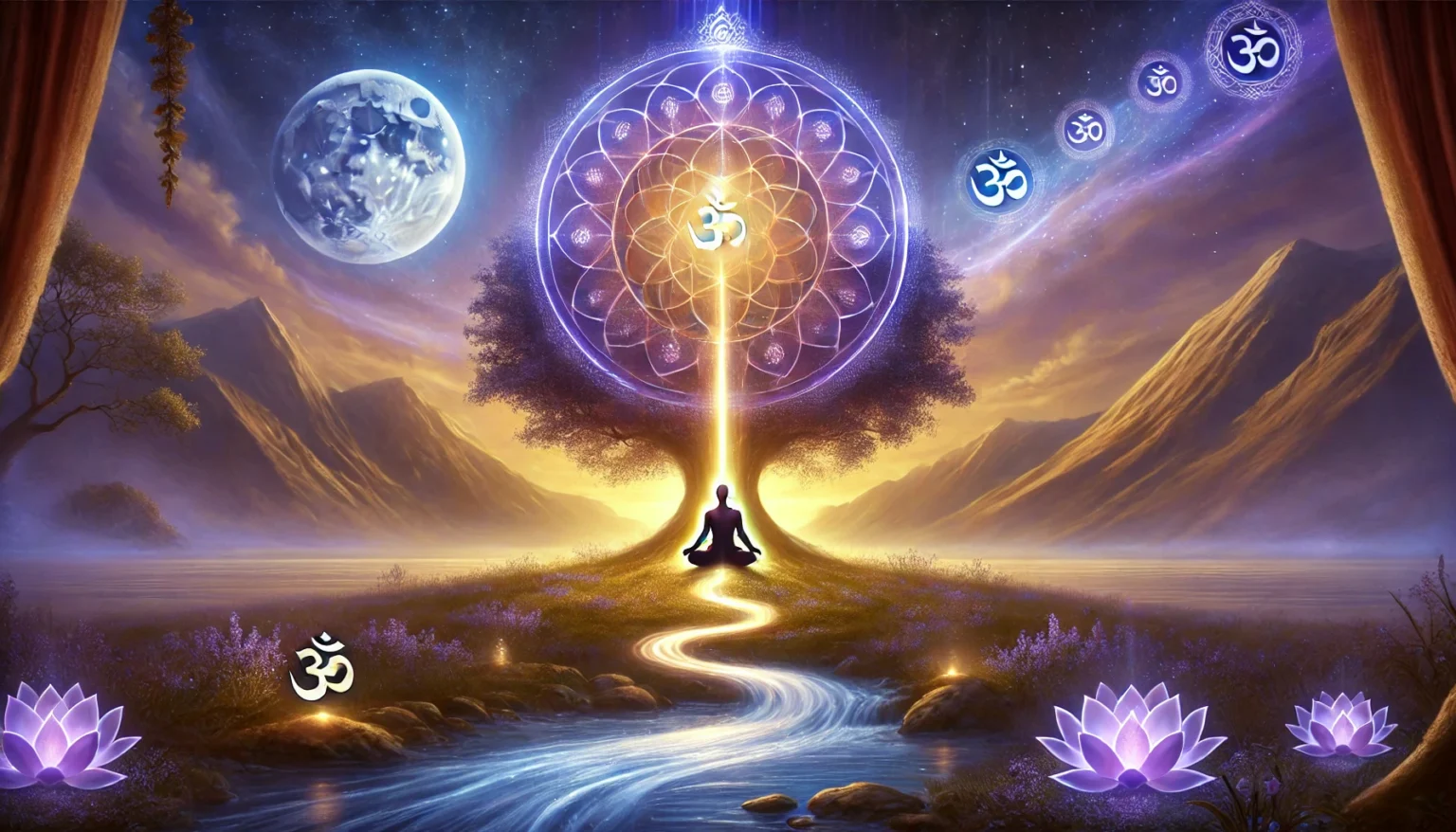Kundalini Yoga is often described as one of the most powerful spiritual practices in the yogic tradition. It’s said to awaken a dormant energy coiled at the base of the spine—known as “Kundalini Shakti”—which, once activated, travels up the spine through the chakras, resulting in spiritual enlightenment. While the concept might sound uplifting and mystical, it’s also important to ask: Why is Kundalini Yoga dangerous?
The dangers don’t lie in the concept itself, but rather in the improper or unguided practice. This article aims to offer a comprehensive explanation of the risks associated with Kundalini Yoga, helping you approach the practice with the caution and respect it deserves.
Understanding Kundalini Energy
To truly understand why Kundalini Yoga can be dangerous, we need to start by understanding what Kundalini energy is.
Kundalini refers to a form of spiritual energy believed to lie dormant at the base of the spine. In Kundalini Yoga, specific practices such as breathing exercises (pranayama), meditation, chanting (mantras), and body postures (asanas) are used to awaken this energy.
Once awakened, Kundalini rises through the central energy channel (sushumna nadi) and passes through the chakras. This process can be deeply transformative—but also overwhelming if your mind and body are not prepared for the intensity.
Physical Risks of Kundalini Yoga
One of the primary reasons why Kundalini Yoga is dangerous is due to the physical strain it can place on the body, especially for beginners or those with underlying health conditions. This form of yoga includes intense breath control, rhythmic movements, and long-held postures that may not be suitable for everyone.
Common Physical Side Effects:
| Symptom | Possible Cause |
|---|---|
| Headaches | Excessive breathwork or poor posture |
| Dizziness | Over-oxygenation due to rapid breathing |
| Fatigue | Overstimulation of the nervous system |
| Back or joint pain | Poor alignment during practice |
These symptoms are signs that the body is being pushed beyond its limits. For some, the rise of Kundalini energy can even mimic or trigger neurological symptoms such as tingling, burning sensations, or muscle spasms.
Psychological and Emotional Risks
The emotional toll of Kundalini Yoga can be significant. One of the more alarming answers to “why is Kundalini Yoga dangerous” lies in how it impacts your psychological well-being. The awakening process may release unresolved traumas, suppressed emotions, or deep-seated fears—often all at once.
Emotional Dangers Include:
- Anxiety and Panic Attacks – Sudden energy surges can cause overwhelming fear or restlessness.
- Depression – Emotional detox can sometimes feel like an emotional crash.
- Insomnia – Disrupted energy patterns can affect natural sleep rhythms.
- Kundalini Syndrome – A term used to describe a cluster of mental, physical, and emotional symptoms related to uncontrolled Kundalini awakening.
These reactions can be frightening, especially for those who start practicing without understanding the emotional intensity involved. Some practitioners even report temporary identity loss, hallucinations, or disconnection from reality, all of which can lead to a spiritual crisis.
Spiritual and Energetic Dangers
Kundalini Yoga is not just physical or mental—it is deeply spiritual. But spiritual growth doesn’t always follow a linear or pleasant path. Without proper guidance and grounding, awakening Kundalini energy can be destabilizing rather than enlightening.
Risks on the Energetic Level:
- Unbalanced Chakras: Rapid awakening may cause the energy to get stuck or move erratically, disrupting your internal balance.
- Overactive Third Eye (Ajna Chakra): Some report increased sensitivity to light, sound, or intuitive visions, leading to confusion or fear.
- Detachment from Reality: Spiritual awakening can make daily tasks or interactions feel meaningless, which may interfere with normal life.
These risks are exactly why spiritual traditions historically required years of preparation before Kundalini awakening practices were introduced.
Importance of Proper Guidance
One of the biggest reasons why Kundalini Yoga is dangerous is the lack of knowledgeable, ethical instructors. This isn’t a practice you can safely learn from random internet videos or casual drop-in classes.
Qualities of a Proper Kundalini Teacher:
| Quality | Why It Matters |
|---|---|
| Deep understanding of yogic science | Helps manage energy flow correctly |
| Experience in handling Kundalini symptoms | Can guide students through crises |
| Ethical and supportive | Ensures emotional and physical safety |
Unfortunately, not all teachers possess these qualities. Inexperienced or untrained instructors might push students too fast or ignore signs of distress, increasing the risk of harm.
Real-Life Reports and Case Studies
Over the years, there have been numerous accounts from practitioners experiencing negative consequences of Kundalini Yoga. While some of these cases may be rare, they serve as important warnings about the intensity of this spiritual practice.
For example, some people have reported spontaneous energy rushes leading to days of sleeplessness or manic episodes. Others have spoken about experiencing visions, sudden mood swings, or even needing psychological care after intense sessions.
These stories, while not the norm, highlight the importance of preparation, moderation, and mentorship in Kundalini practice.
How to Practice Kundalini Yoga Safely
Just because there are dangers doesn’t mean Kundalini Yoga is inherently bad. Like any powerful tool, it must be used responsibly. If you’re still drawn to the practice despite knowing why Kundalini Yoga is dangerous, there are steps you can take to reduce the risks.
Tips for Safe Practice:
- Start Slowly – Avoid intense kriyas or breathwork early on. Ease your body into it.
- Get a Health Check – If you have heart issues, anxiety disorders, or trauma, consult a doctor before beginning.
- Work With an Experienced Teacher – Avoid self-teaching through YouTube or books alone.
- Practice Grounding Techniques – Yoga nidra, walking, or eating grounding foods can help stabilize the energy.
- Keep a Journal – Tracking physical, emotional, and spiritual changes can help you stay self-aware.
- Build a Support System – Speak with other practitioners or join a community for shared insights and support.
Conclusion: Respect the Power of Kundalini
So, why is Kundalini Yoga dangerous? It’s not because the energy itself is harmful—but because awakening it prematurely, aggressively, or without guidance can lead to serious physical, emotional, and spiritual disruptions.
If approached with humility, discipline, and the right support, Kundalini Yoga can be a powerful path to transformation. But the key is respecting the energy and the process. Educate yourself, go slowly, and always listen to your body and intuition. The risks are real—but so are the rewards when practiced wisely.
Other Articles
Comprehensive Guide to the Jianfan Hemoperfutor IFU
www.free worlderorg: The Ultimate Guide to a Money-Free, Sustainable Future
Culaina Grosaina: A Complete Guide to Its Meaning, Origins, and Modern Relevance
Understanding the 3822 Blossom Terrace Erie PA Water Hook Up Diagram: A Complete Homeowner’s Guide








